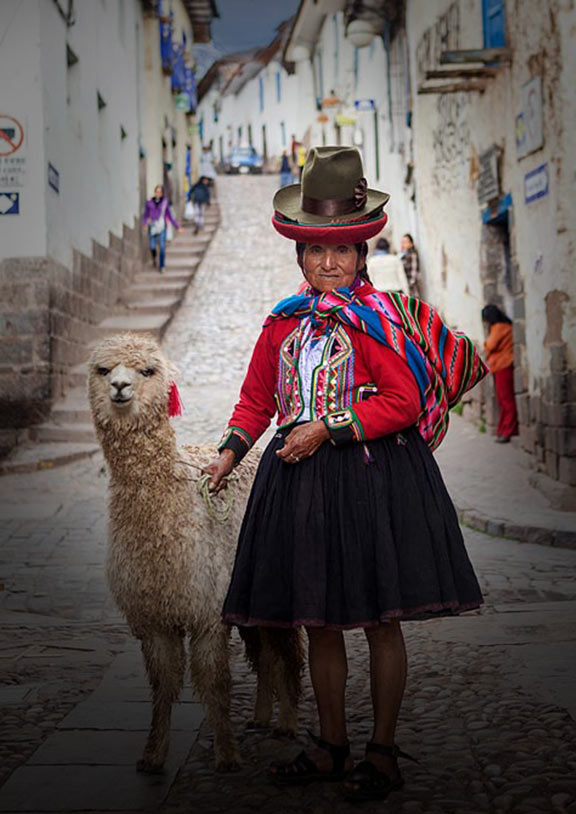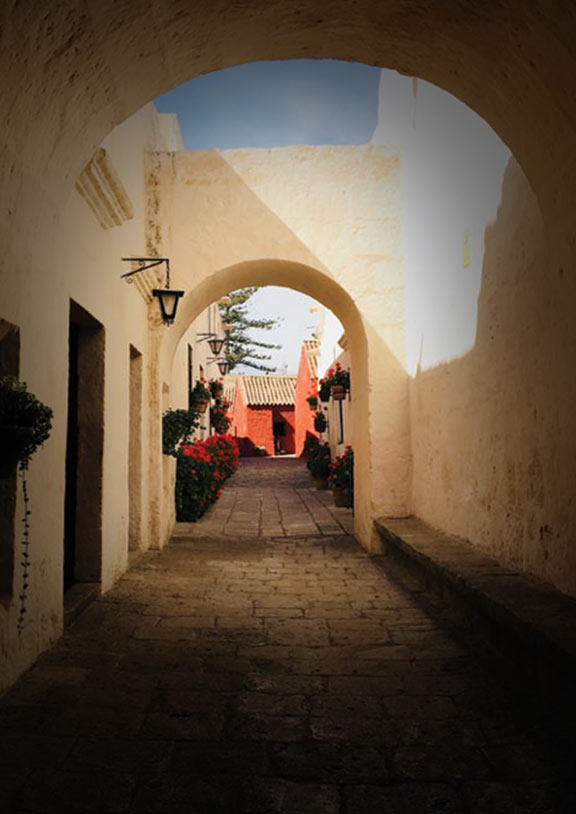Ancient Huaca Pucllana in Peru
Discover everything you need to know about Huaca Pucllana by exploring the history, cultural significance, tour options, museum, and on-site restaurant of these fascinating ruins.
 Sunlit exterior of the Huaca Pucllana Ruins. Photo by Peru For Less.
Sunlit exterior of the Huaca Pucllana Ruins. Photo by Peru For Less.
Do you find yourself with a free day in Lima, Peru and wonder what to do next? You’ve already visited the numerous museums and enjoyed the world renowned cuisine that the country has to offer. Now you’ve set your sights on something more historic. Why not the famous Huaca Pucllana pyramids!
Nestled in the bustling district of Miraflores, you’ll find a place in stark contrast with the industrial world around it. One of just many ancient monuments to explore, Huaca Pucllana is especially impressive as far as Peruvian ancient ruins, considering it is one of the oldest in Lima!

Looking up at the Huaca Pucllana pyramid. Photo by the Municipality of Miraflores on Flickr.
What is Huaca Pucllana?
One of the first questions you might ask is, what are Huacas? In Quechua, one of the native languages of the Andes Mountain range, huacas (or wak’as) can be an object or a monument that is revered for its cultural and religious significance to the Inca people.
The Natives of Lima
At the turn of the first millennia, sometime around 200 a.d., the Lima culture began construction on the huaca. As with many buildings at the time, the process was laborious and time consuming, but necessary. Then in the 400’s, as population size exploded, the occupation of Huaca Pucllana grew dramatically.
So in a country where 3% of the land is arable, and of that only 0.5% is suitable for long term agricultural activity, choosing the best spot was crucial. With quick access to the ocean as well as a close proximity to the Rímac River, the huaca’s location is no surprise. And with irrigation being such an integral part of settlement, it was imperative to have a base capable of these processes.
LIMA TOURS:
 #6 Discover PeruMachu Picchu, Cusco, Titicaca, Amazon, Lima, Paracas, Arequipa & Colca
#6 Discover PeruMachu Picchu, Cusco, Titicaca, Amazon, Lima, Paracas, Arequipa & Colca
16 Days / from $3729 #5 Capture Historical PeruMachu Picchu, Cusco, Lima, Arequipa & Colca, Paracas
#5 Capture Historical PeruMachu Picchu, Cusco, Lima, Arequipa & Colca, Paracas
11 Days / from $2679See All Lima Tours
Archeological Significance
From historical clues it appears that the ruins served two main purposes, highlighted below.
Western Ruins
The first purpose focused on the success and expansion of the Lima culture. The western section of the ruins were utilized as an administrative and regulation center. Evidence also shows that other complexes were used for the storage of agricultural products. In addition, high ranking members of the community required spaces to conduct meetings regarding strategy.
The structure also allowed clergymen of the day better oversight of the surrounding natural resources. Having control and quick access to both fresh and saltwater was integral in helping this coastal community flourish and spread.

View of Miraflores, Lima from atop Huaca Pucllana. Photo by Adriana Proaño of Peru For Less
Eastern Ruins
On the other side of the compound, you’ll find the second and more spiritually significant portion of Huaca Pucllana. Indigenous religions have adapted throughout time, and a structure like this was probably built to honor the god, Pachamama. Also a word in Quechua, Pachamama is the Andean equivalent to Mother Earth.
Because it was believed to have a divine connection, the 72 foot, or 22 meter Peruvian temple was likely reserved for religious rites and ceremonies held by the communities high priests. Furthermore, it was used for grand feasts and ritual banquets
But there has been other speculation as to the purpose of the pre-Incan Huaca during times of uncertainty, such as a year of drought or poor harvest. Offerings were a common way to combat these issues, although sometimes a desperate problem may have called for a drastic solution. For this reason, it is very likely that human sacrifice appeared as one of the main methods of appeasement to the Gods.
The Wari Culture
Around the year 700 a.d., for reasons most likely political and social, the Lima culture moved away from Huaca Pucllana. After that, it found new keepers in the Wari culture. The Wari people, who hailed from Ayachuco, had already begun their expansion years prior to encountering the abandoned Lima pyramid.
Nearly 100 years later, they had successfully converted the upper parts of the monument into a tomb for the aristocracy. In this process, parts of the original structure were damaged or destroyed to accommodate its newly realized purpose. This fact remained a mystery for centuries and was only confirmed as recently as 2008. Archeologists first unearthed three bodies buried in the ruins. Among the bodies, they discovered a child who appeared to have been sacrificed, lending more proof to the theory of the pyramid’s sacrificial history.

Statues depicting a religious ceremony in the ruins. Photo by Paulo JC Nogueira on Wikimedia Commons.
Related Post
A shocking documentary proves that mermaids do exist
SHOCKING Revelation: Thuya, Mother of Queen Tiye, Was the Grandmother of Akhenaten and Tutankhamun—What Ancient Egyptian Secrets Did She Leave Behind?
Breaking News: Astonishing Discoveries at Karahan Tepe Confirm an Extraterrestrial Civilization is Hiding on Earth, and NO ONE Knows!
Breaking News: Researchers FINALLY Discover U.S. Navy Flight 19 After 75 Years Lost in the Bermuda Triangle!
NASA’s Secret Investigation: Uncovering the Astonishing Mystery of the UFO Crash on the Mountain!
Explosive UFO Docs LEAKED: Startling Proof That Aliens Ruled Ancient Egypt!